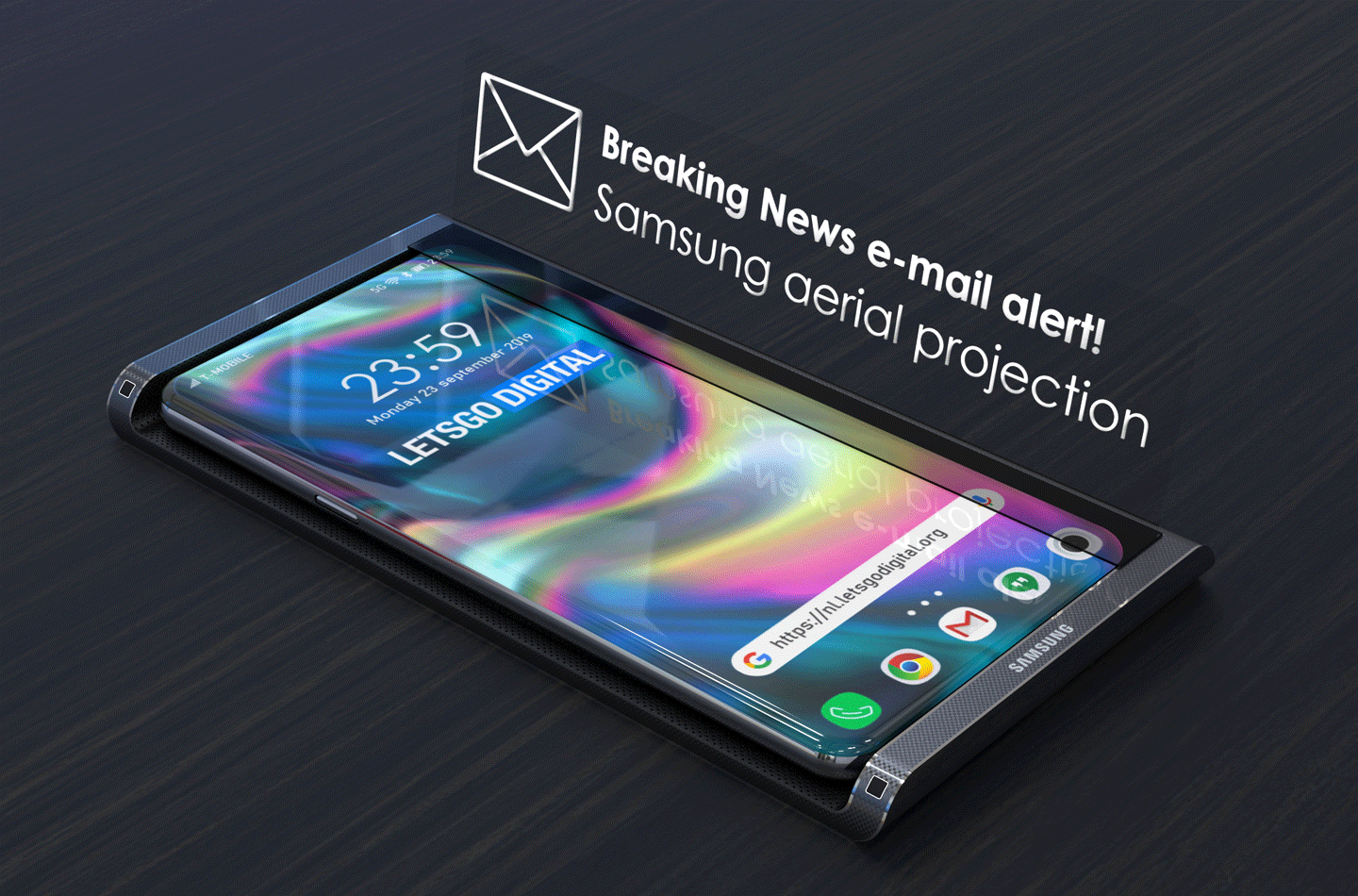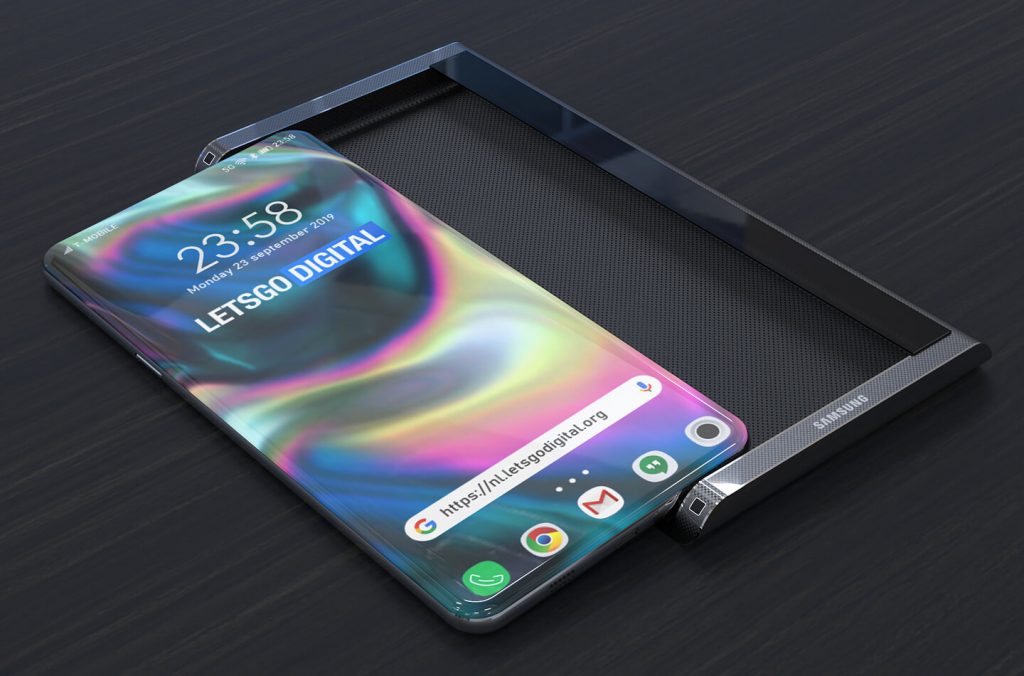Samsung Invents a Galaxy Phone Dock with a Holographic Display
Your next phone could display info right in the air

Samsung claims that it has invented a docking station for future Galaxy phones that will be capable of showing information — like message notifications, music playing or weather information— floating in the air. Not only that, but it wants you to be able to interact with these holographic images.
The patent unearthed by Lets Go Digital in the USPTO files is titled ”Three dimensional imaging device and electronic device including the same.” This is how it works: put the phone inside the dock and boom, the built-in 3D projector will be able to project information in the air.
The company — which is imagining this being used at home for things like smart speakers and even on cars’ dashboards — says that it can project any image, from information like notifications to photos. Samsung believes that this will be extremely useful for consumers, especially because of two reasons.
First, there’s no need for specialized 3D content or third-party applications to take advantage of the technology: it just shows 2D info in the air while your phone lies down. Second, users will be able to interact with this holographic projection using their fingers, doing things like clicking phantom buttons or dismissing notifications with a swipe.
Samsung apparently believes that people want this, even while consumers can do the same putting their phone on a stand but, hey, it is THE FUTURE and in the future everything floats and is made of photons.

Samsung has been working on allegedly more advanced holographic displays for a while. Last year the company claimed they had invented a method to project high-quality 3D images in the air. The patent — published in 2018 — described a new type of spatial light modulator that eliminates ‘the limited viewing angle and low resolution of current holographicclai technologies.’
It sounded like a lot of bunk back then, and still does now. Especially since they haven’t shown anything publicly yet, even while it’s well known that the Seoul-based company has been working on this type of device for a long time.
Sign up to get the BEST of Tom's Guide direct to your inbox.
Get instant access to breaking news, the hottest reviews, great deals and helpful tips.
Scientists have spent decades working on the Star Wars dream of having Princesses Leia materializing in 3D out of thin air, images that can be seen from any angle, just like you see objects in real life.
What we know is that today’s holographic technology requires you to look directly at a 2D surface with a very limited view angle, like the laser-etched still images you can find on your Visa card or the parallax barrier-based display used in the Nintendo 3DS display or the Red Hydrogen One phone. There are other devices, like Looking Glass holographic box, that depend on a bulky hardware contraption. And there’s experimental stuff that actually projects things in 3D in the air, but it’s crude and requires giant machines.
So we will see what kind of trickery Samsung has been working on — one day, I guess. Not so far away, I hope.
Jesus Diaz founded the new Sploid for Gawker Media after seven years working at Gizmodo, where he helmed the lost-in-a-bar iPhone 4 story and wrote old angry man rants, among other things. He's a creative director, screenwriter, and producer at The Magic Sauce, and currently writes for Fast Company and Tom's Guide.

